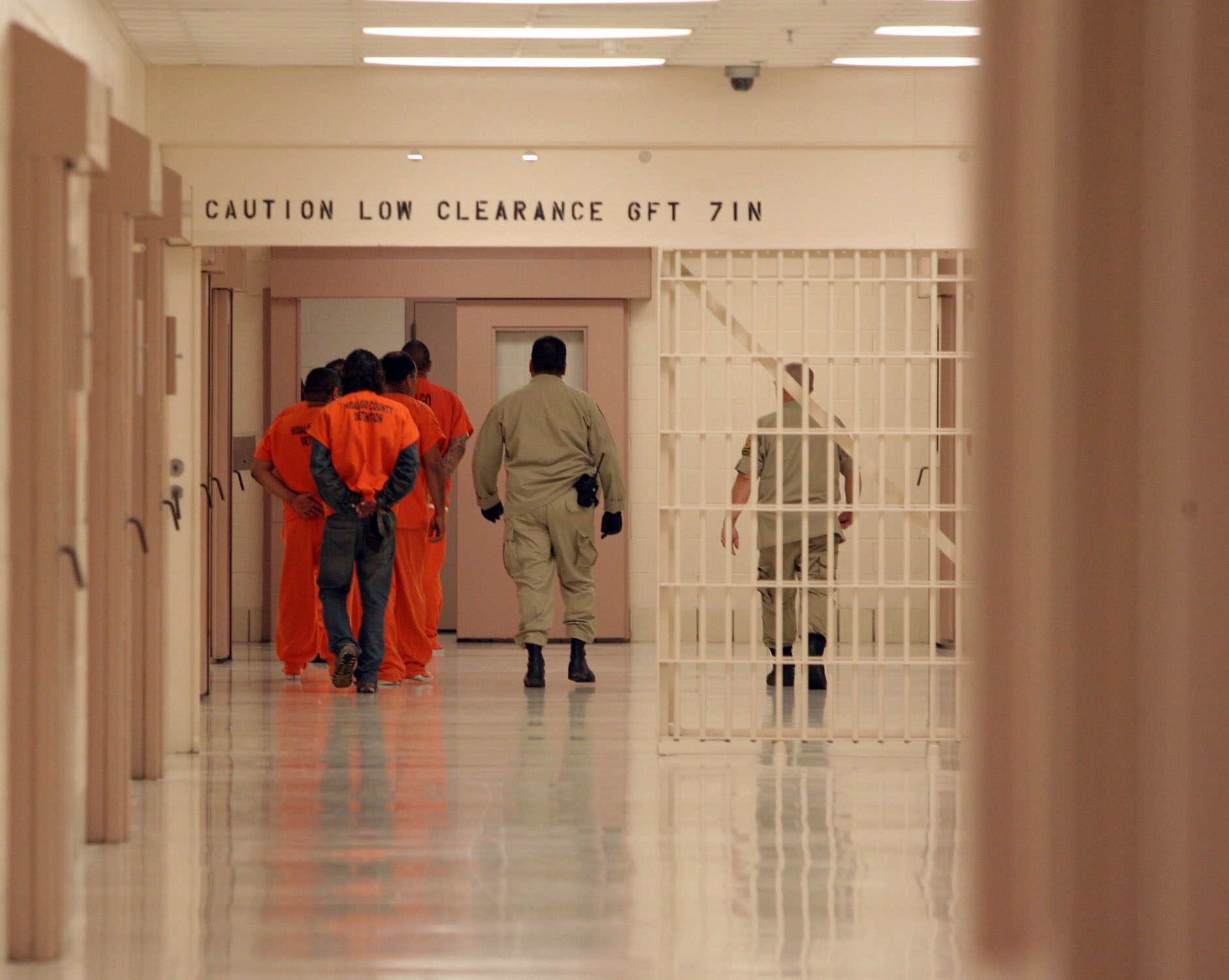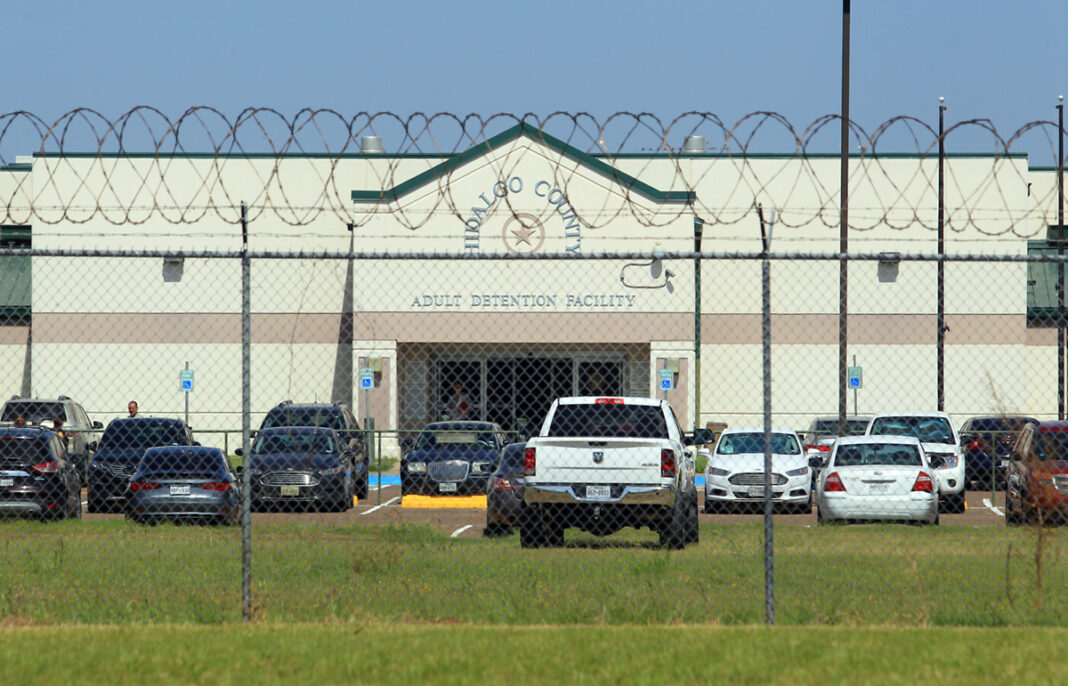The Hidalgo County Commissioners Court on Tuesday afternoon approved a feasibility study to examine expanding the county jail.
The decision was unanimous and without public discussion.
Hidalgo County will pay ERO Architects $100,000 to conduct the study with possible fee increases if the project’s scope changes.
The county jail’s population has been at near capacity for some time.
As of Aug. 1, the Hidalgo County Adult Detention Center was at 99.51% capacity, with a total population of 1,226 people with a total capacity of 1,232 — just six people away from total capacity, according to the Texas Commission on Jail Standards.
Not only that, there were zero beds available at the time of that report, which is the latest available.
The pandemic has only exacerbated capacity issues at the jail.
Early on during its onset, Gov. Greg Abbott issued an executive order prohibiting anyone accused of a violent crime from being released on personal recognizance bonds, which do not require a cash payment to a bail bond company.
The action was in response to Harris County officials releasing people accused of crimes on personal recognizance bonds to reduce its county jail population as that community sought to mitigate the spread of the virus within its jail.
That executive order has had a ripple effect across the state and in Hidalgo County because the Texas Supreme Court, which is a separate branch of government, issued orders halting in-person hearings during the pandemic, stopping the resolution of these cases for more than a year here.
Hidalgo County has only held one jury trial since the pandemic began, but as soon as that trial concluded in July, the delta variant took hold here and jury trials were again placed on hold.
This has resulted in capacity issues at the Hidalgo County jail as people accused of violent crimes cannot bail out on personal recognizance bonds and people are often not able to afford the high bonds that accompany a charge of violent crime.
The chain of events has resulted in the Hidalgo County Board of Judges prioritizing trials and in-person proceedings for people accused of violent crimes in order to try and resolve these cases and get people out of the county jail.
And the pandemic has only exacerbated the bandage officials use to ease capacity by utilizing Brooks, Cameron, Jim Hogg and Starr counties to hold inmates to mitigate capacity issues at the Hidalgo County jail.

In 2019, the county spent approximately $4,883,329 housing people in other county jails, a figure that ballooned in 2020 to approximately $6,141,752, according to numbers obtained from the county jail through a Texas Public Information Act request.
As of Aug. 1, Hidalgo County was holding 363 people accused of crimes in other counties — the highest number in the state, according to the Texas Commission on Jail Standards.
THE STUDY
In a proposal letter, ERO Architects principal Brian Godinez told Hidalgo County Budget Officer Sergio Cruz that the feasibility study includes three phases “to define the best and most responsive solutions for the continued operation of the Hidalgo County jail.”
This first phase is a “Needs Assessment” that includes seven tasks, the first being organizing the effort, which includes identifying stakeholders, roles of groups and personnel involved and establishing a project timetable and proper lines of communication for all the parties involved in the study.
In the second task, ERO Architects will make sure any new jail expansion or construction complies with operational and architectural standards set out by the Texas Commission on Jail Standards.
ERO Architects will also examine the American Correctional Association standards.
“Sometimes referred to as ‘national standards,’ these standards and its accreditation process are thought to raise the quality of local operations and provide some insulation from liability,” Godinez wrote in the proposal. “ERO will research these standards and provide an opinion as to what these standards will have on the design and operations.”
Upon completion of this task, Godinez says the third task is formally document project goals.
“The Mission Statement is of major importance and is used in communicating the nature of the project to the public and in directing the planning of the work,” his proposal says. “The mission (philosophy) to a great extent determines the types of spaces, size, and cost of the facility.”
The next task includes presentations.
“Knowledgeable stakeholders and decision makers are one of many keys to the success of a jail planning project. ERO will make presentations to appropriate committees and staff regarding the planning process, modern operational concepts, and trends in corrections and law enforcement,” Godinez wrote.
The fifth task will examine bed needs and ERO Architects will review demographic and population projections to provide context for jail need and growth, according to the letter.
This includes examining jail data trends, population profiles and bed need forecasts.
After this, ERO Architects will evaluate the existing jail, including its mechanical systems, booking area, program spaces and kitchen and laundry areas.
“The facility evaluation will be conducted concurrently with Task 5 – Bed Needs so that all information can be brought to the County at the same time,” the proposal states.
The final task will be a final report and presentation which will then usher in the second phase where the firm will use what it has learned to establish operational requirements and design parameters focusing on staff efficiency, productivity and lowering construction costs.
“At the end of this phase, ERO will have identified all the operational and architectural characteristics of the facility including each space and its size. We will also have staffing concepts and staffing forecasts as well as a construction budget and schedule,” Godinez wrote. “Work product deliverables will include a functional and architectural program (including space lists), program-level construction cost estimate, and preliminary staffing estimate.”
This phase include six tasks, with the fifth determining budge estimates for construction that include fees, furnishings and equipment.
The final phase includes concept design options, which include cost and staffing estimates.
“Concepts will be presented to the County for discussion, refinement, and final selection towards a path forward,” the proposal states. “Included with each option will be a plan for future facility growth that will be part of an overall master plan.”
Godinez says in his letter that this entire process should take four months.





